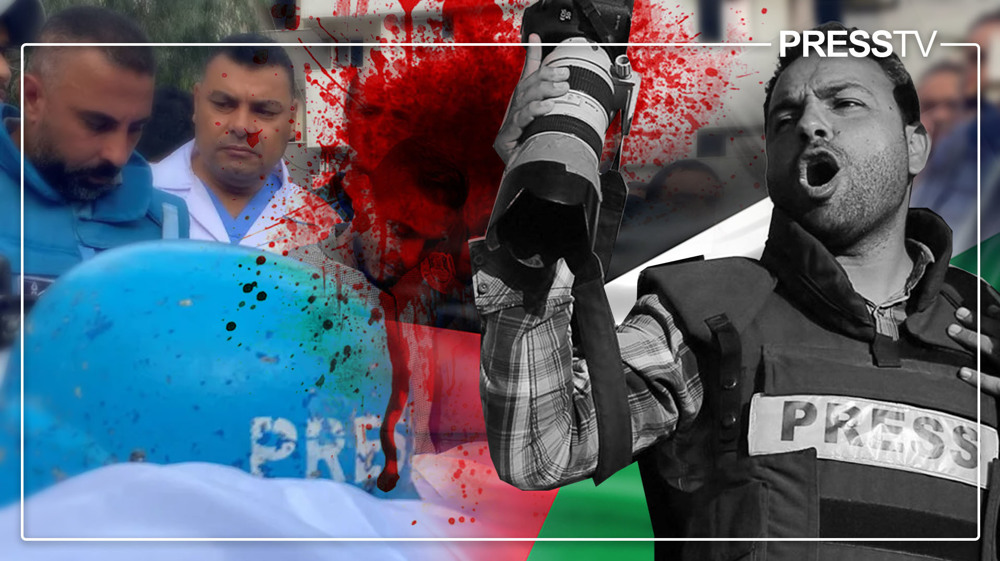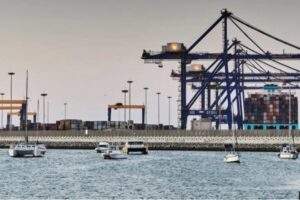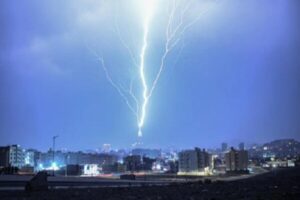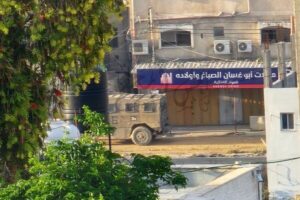By Syed Zafar Mehdi
A Reuters journalist was killed and six others were wounded in indiscriminate artillery shelling by Israeli forces in southern Lebanon on Friday amid unrelenting aggression and unprecedented escalation.
The slain videographer was identified as Issam Abdallah. Four journalists who were injured in the targeted attack worked for Reuters and Al Jazeera, according to media reports.
“We are deeply saddened to learn that our videographer, Issam Abdallah, has been killed,” the Reuters management said in a statement late on Friday, avoiding the mention of who killed him.
“We are urgently seeking more information, working with authorities in the region, and supporting Issam’s family and colleagues.”
Qatar-based Al Jazeera said the network’s cameraperson Elie Brakhia and reporter Carmen Joukhadar were among those wounded in the Israeli attack.
“The tank shell hit them directly. It was horrible. The situation over there was – I can’t explain, I can’t describe it,” Al Jazeera correspondent Ali Hashem was quoted as saying, adding that the team of journalists at the scene sported vests marked as press.
Lebanon’s Press Editors’ Syndicate condemned what it called the “targeting” of journalists and described the killing of a Reuters videojournalist as a “deliberate crime”.
At least 11 journalists have been killed as a result of indiscriminate Israeli bombardment of densely-populated civilian areas in the besieged Gaza Strip in the past week, and many are reported injured or missing, according to the Committee to Protect Journalists (CPJ).
“Journalists in Gaza face particularly high risks as they try to cover the conflict in the face of a ground assault by Israeli troops, devastating Israeli airstrikes, disrupted communications, and extensive power outages,” the CPJ said in a statement on Friday.
The Israeli regime, showing no mercy even to Western media journalists, has killed Reuters’ journalist Issam Abdullah and inured five journalists from Al Jazeera, Reuters, and AFP in its airstrikes in southern Lebanon. pic.twitter.com/h5kCtfjZp5
— Palestine Highlights (@PalHighlight) October 13, 2023
Apart from Abdallah, many other Palestinian journalists have been killed since Saturday, when the Gaza-based resistance movement Hamas launched the Al Aqsa Storm operation, taking Tel Aviv and its Western allies by complete surprise.
The operation was a response to months of unending atrocities against Palestinians in the Gaza Strip and the occupied West Bank as well as the repeated desecration of the Al-Aqsa Mosque.
On October 12, a journalist for Sowt Al-Asra Radio (Radio Voice of the Prisoners), identified as Shehab, was killed along with his wife and three children at his home in the northern Gaza Strip.
According to the Palestinian Journalists Syndicate, he and his family were killed after the Israeli airstrike ripped through their home in Jabalia, 4 kilometers (2.5 miles) north of Gaza City.
On October 11, a freelance Palestinian photojournalist Abu Matar was killed in an Israeli airstrike in Rafah City, southern Gaza Strip, according to The Palestinian Journalists Syndicate.
WAFA news agency reported that Matar, who worked with international news agencies, was killed while covering the ongoing Israeli aggression on the besieged coastal strip.
On October 9, Saeed Al-Taweel, chief editor of the Al-Khamsa News website, and photojournalist Mohammed Sobih was killed after Israeli warplanes pounded an area in the Rimal district of western Gaza.
According to multiple media reports, the airstrike precisely targeted the Hiji building, which houses many local and international media offices, including that of Taweel and Sobih.
Hisham Alnwajha, a journalist for the “Khabar” news agency, was also killed in the same strike. He initially suffered critical injuries and succumbed at the Shifa Medical Complex in Gaza city.
“Unfortunately, they have sent a warning notice to the Hiji building just now that it will be bombed,” were al-Taweel final words, according to a recording obtained by Al Jazeera. “The area has been evacuated entirely. Women, men, the elderly, kids have all completely fled the area.”
On October 8, Gaza-based freelance journalist Assad Shamlakh was killed along with his nine family members in an Israeli airstrike on their home in the southern Gaza Strip neighborhood of Sheikh Ijlin, according to The Legal Agenda organization.
On October 7, Mohammad Al-Salhi, a photojournalist with the Fourth Authority news agency, was killed near a Palestinian refugee camp in the central Gaza Strip, according to the Wafa news agency.
The Journalist Support Committee, in a statement, strongly condemned the “targeted attack” on journalists which it noted “represents a flagrant violation of human rights and freedom of the press.”
The same day, two other Palestinian journalists, Mohammad Jarghoun, who worked for Smart Media, and Ibrahim Mohammad Lafi, a photojournalist for Ain Media, were also killed by the Israeli forces.
Jarghoun was shot while reporting in an area east of Rafah city in the southern Gaza Strip, according to Palestinian press freedom group MADA and the JSC, while Lafi was shot and killed at the Gaza Strip’s Erez Crossing into the occupied territories.
Two Palestinian photojournalists – Nidal Al-Wahidi who works for the Al-Najah channel and Haitham Abdelwahid who works for the Ain Media – have been reported missing, according to a media watchdog body.
According to sources in the Gaza Strip, the death toll of journalists could be much higher as information remains very scarce amid chaos and commotion created by the Israeli bombing campaign.
Hours before Abdallah was killed in southern Lebanon on Friday, he shared a photo of Shireen Abu Akleh on his Instagram page.
Akleh was murdered by Israeli forces in the occupied West Bank city of Jenin in May last year.
The long-time Al Jazeera Arabic journalist, who shot to fame while covering the second Intifada between 2000 and 2005, was along with a group of local journalists reporting on an Israeli raid when the trigger-happy raiders went berserk, shooting her dead.
Justice was denied to Akleh’s family, as Israeli regime lobbyists managed to push it under the carpet.




